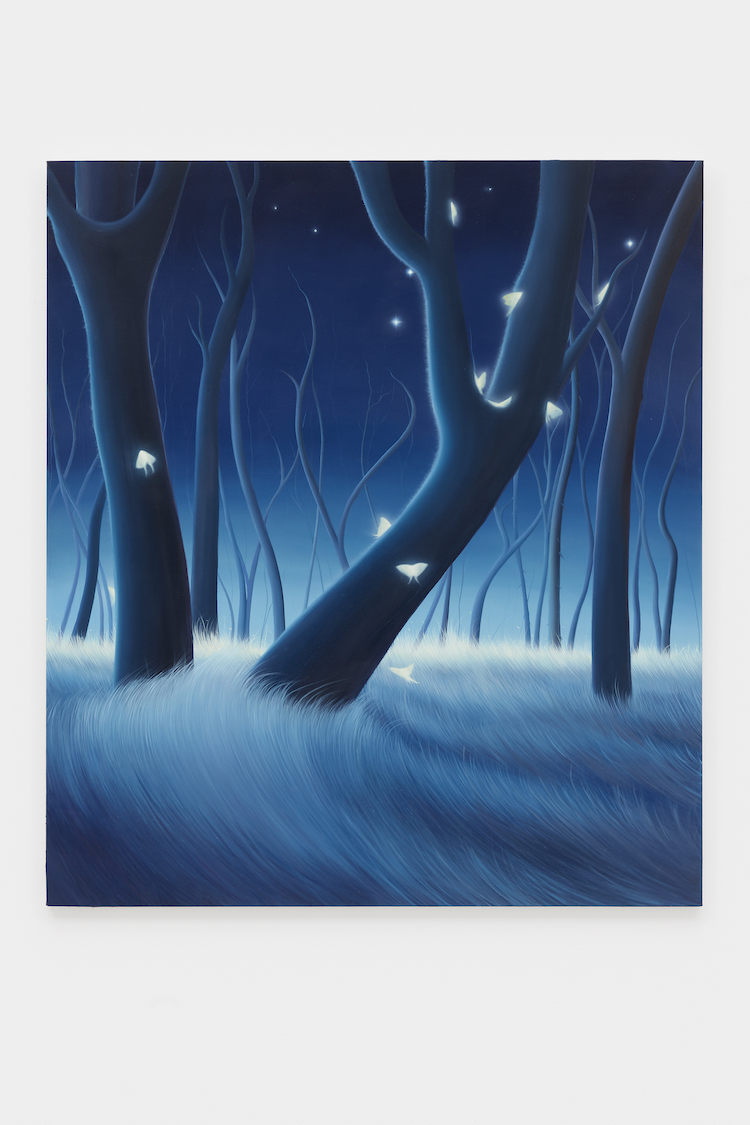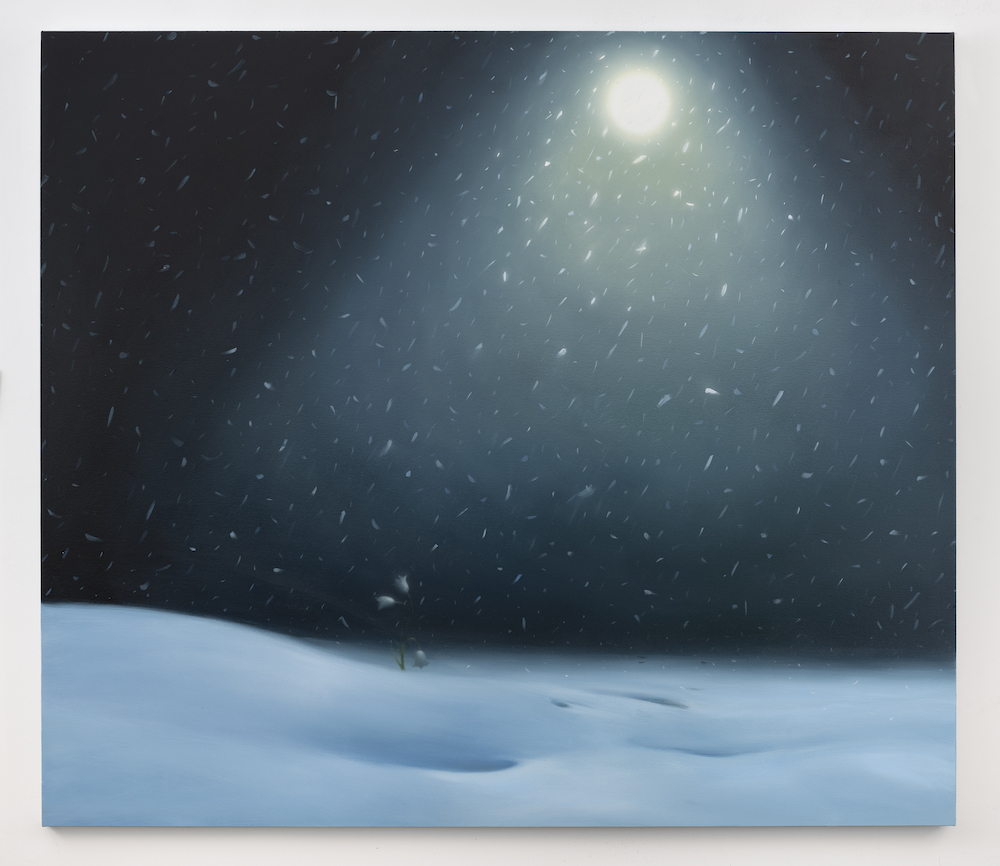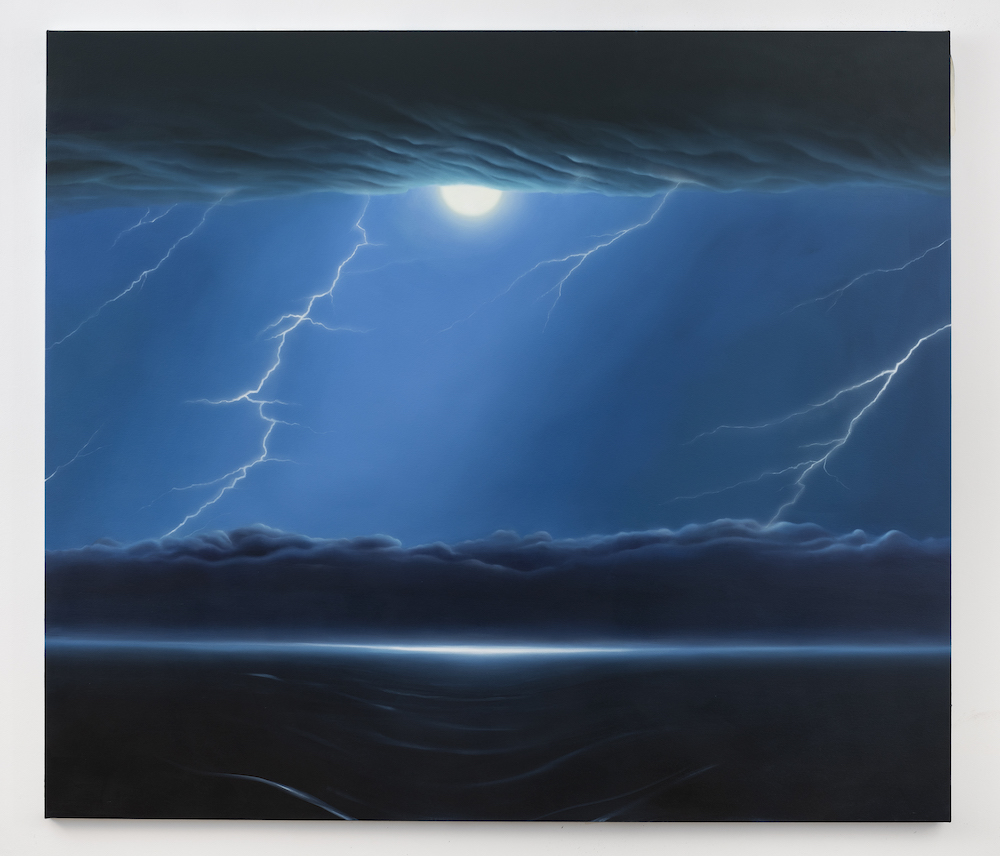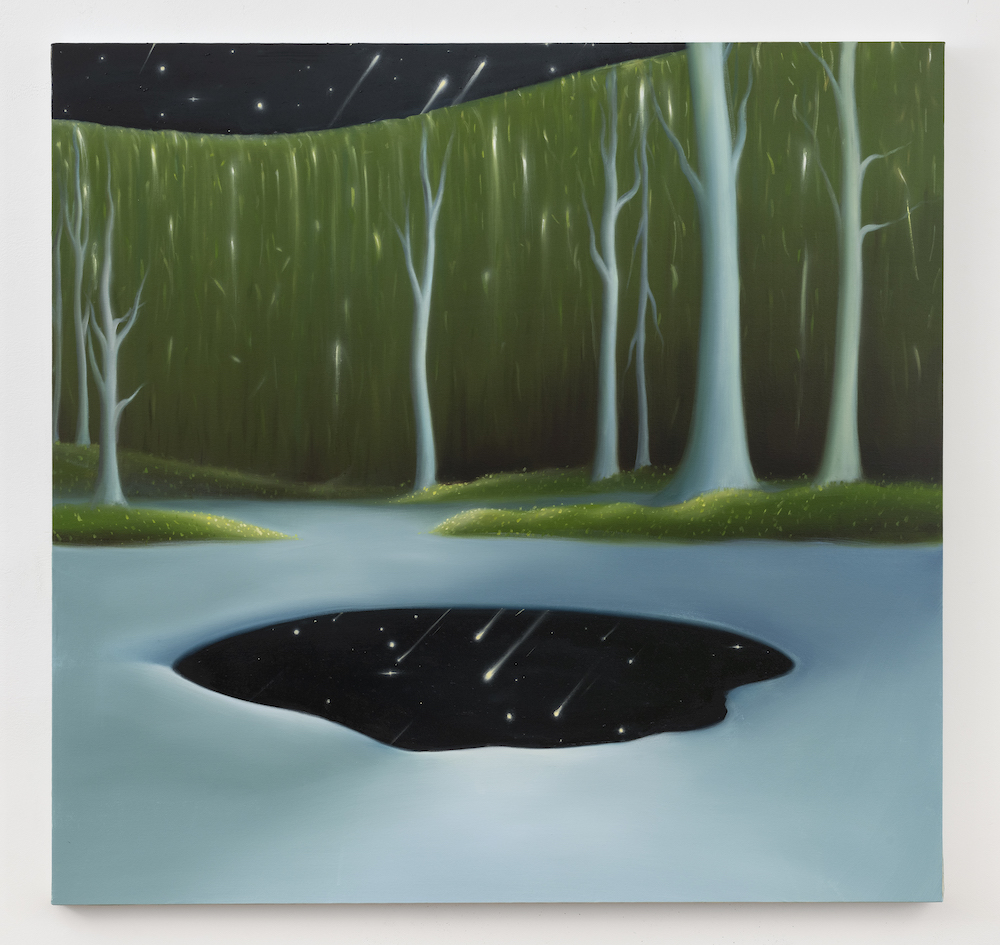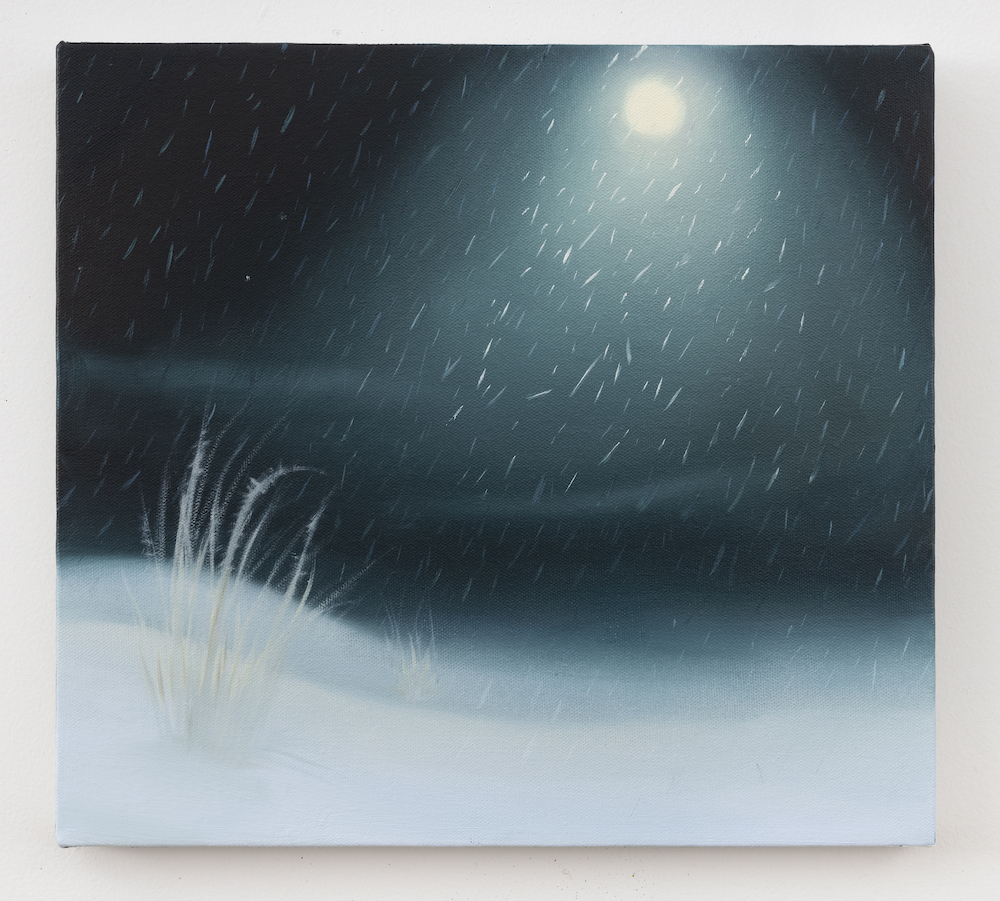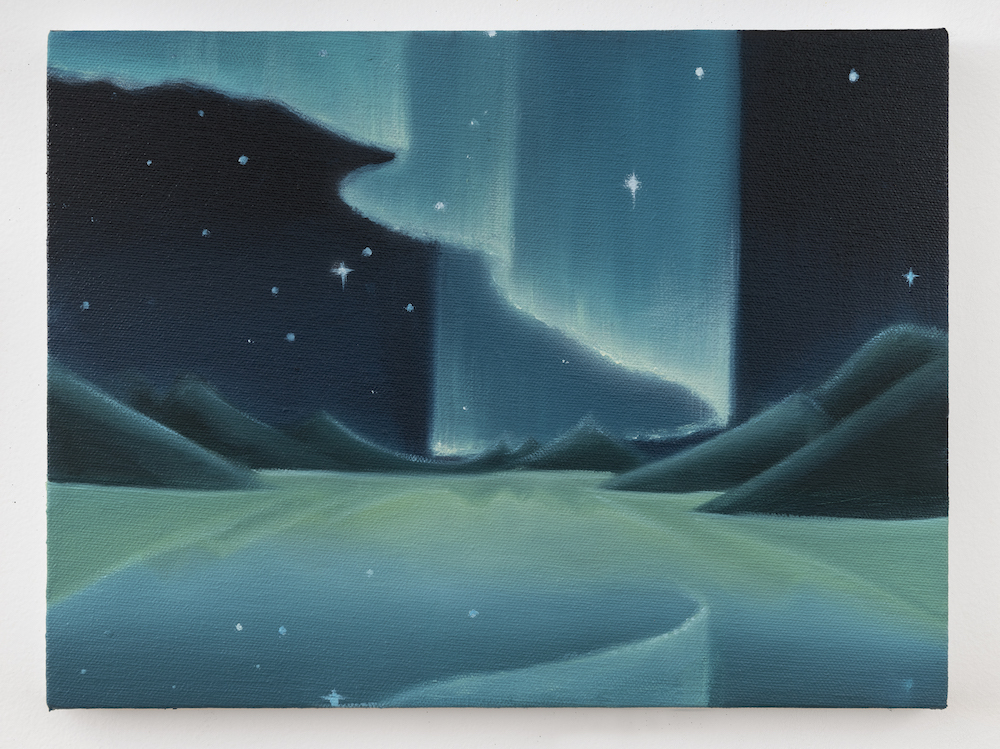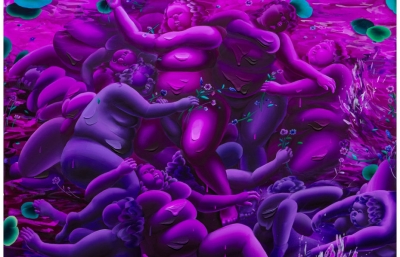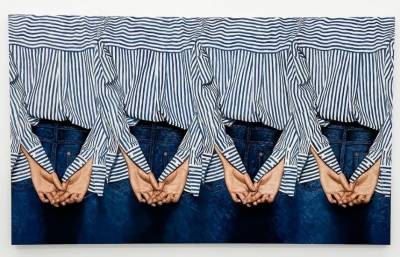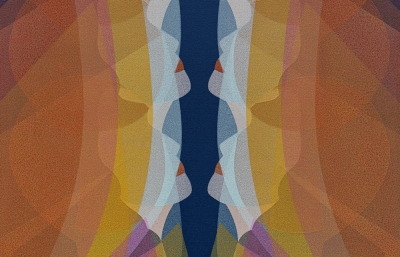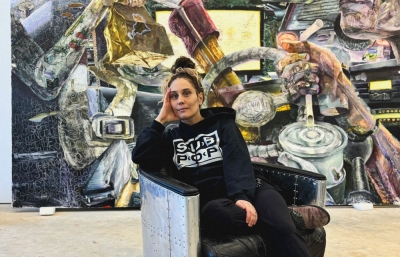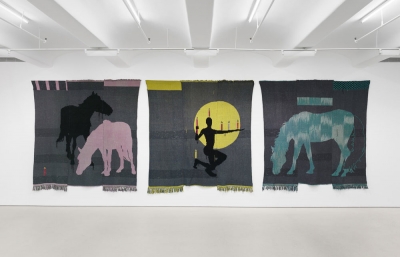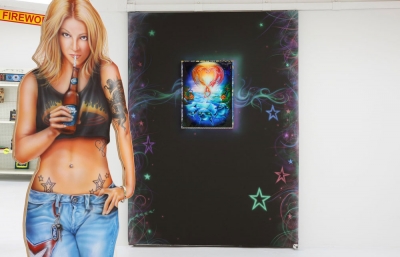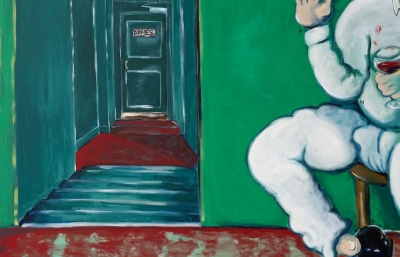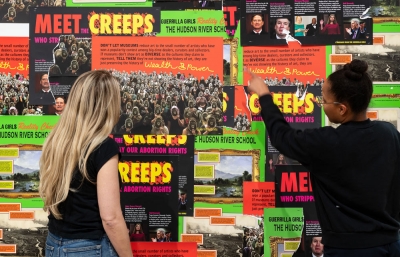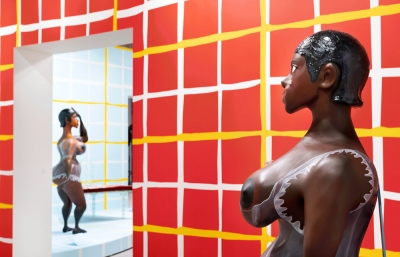As we keep looking into all the shows coming up this fall, one show we have our eye on is Sarah Lee's Two Skies, opening on September 7th at albertz benda in NYC. Her serene and yet often almost violently quiet paintings of nature have been seen as almost mysterious and supernatural, a comment on the inner psyche of the viewer, the painter, and our relationship with nature.
Lee’s finely painted, haunting landscapes hail from a European rather than an East Asian tradition. A reproduction of Millais’s Ophelia 1851 – 52 hangs alongside French illustrations and photos of the Northern Lights on the wall of her East Village studio. Uniting these are intense palettes of earthy greens, deep blues, and glowing chartreuse tones that reflect the horror and beauty of the natural world. Trees bend and sway organically and tall grasses shift with the wind. Rather than painting reality, she evokes an idea of a landscape.
Lee seduces viewers with her paintings, which draw them closer in the sense of the true Kantian sublime: as one gets closer, she feels smaller and the painting feels larger, as if the scene envelops her. This shared expression of human vulnerability reflects the current state of society after two years of pandemic lockdown, a united sense of grief, a wellspring of political resistance, and controversial reversals of longstanding laws that protect women and the LGBTQ community in the US. Lee’s unpopulated forests, in their solitude, symbolize a meditation on silence and retreat. The forest becomes an alternative to the digital bombardment of our daily lives—from the 24-hour doomsday news cycle to the obsession with social media, which has been found to have deleterious effects on mental health.
Lee works at night when downtown New York is quiet and exudes a peaceful energy, although nighttime is at times associated with a foreboding sense of danger. Her new series continues her interest in dusk and evening scenes that display a unifying color range. She does not sketch, instead applying the paint straight to canvas in an intuitive process that starts from abstract idea, which is sometimes not even visual, but more of a feeling. Starting with the background, she builds up layers of the canvas—grass, trees, a body of water, various details—and smudges the paint to create surfaces as slick as Old Master panels: indeed, the warp and weft of the linen canvas is undetectable.
Lee places an unexpected element in each canvas, for example a creature or a flower, sometimes barely discernable in the canvas. In Luna Moths, 2023 the artist scatters small glowing moths throughout the scene. These elusive creatures only exist for one week and have no mouths as they only live to reproduce. These small touches, combined with multiple light sources, lend the scene an uncanny glowing atmosphere. In this sense her work may be understood in the legacy of Surreal artists including Giorgio di Chirico, Yves Tanguy, and Marion Elizabeth Adnams or transcendental artists including Agnes Pelton and Lawren Harris. Lee’s work represents an exciting alternative to identity-based figuration that has dominated painting practice in previous years and signals a shift towards a more mystical approach to artmaking.

